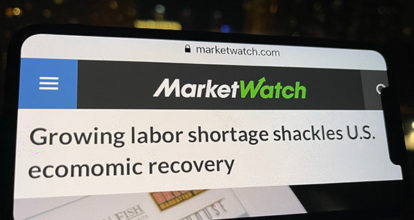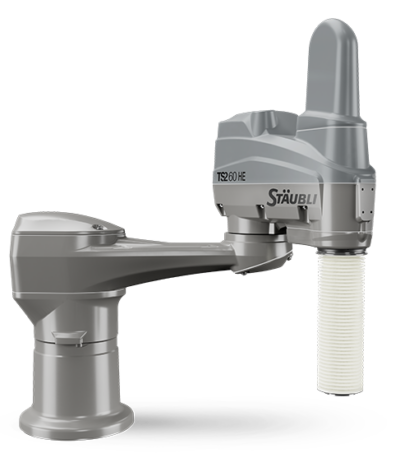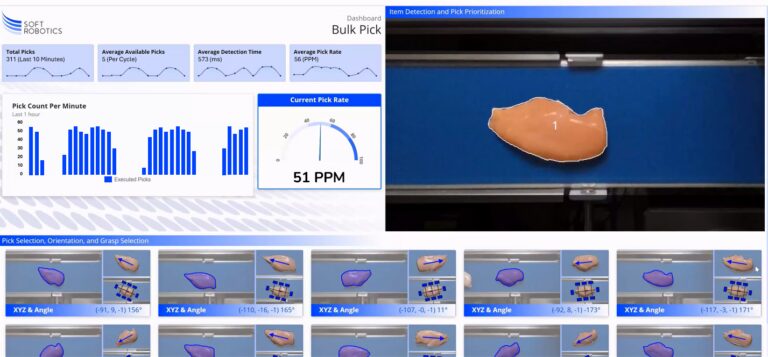The next generation of automation ensures business continuity and high productivity.
The global food processing industry is faced with two challenges: the enormous demand for food and ongoing labor shortages. Statista predicts that across the globe food production will increase by 3.9% in 2025 and that revenue in the food market will increase annually by 6.58% from 2024 to 2028, yet plants will not have access to more workers. A study from Deloitte and the Manufacturing Institute forecasts 2.1 million unfilled manufacturing jobs by 2030. Anecdotal evidence from the food and beverage industries shows that these sectors will not go unscathed; in April 2022, just under 12,000 jobs in the consumer packaged goods space were filled, barely making a dent in the 120,000 vacancies.
access to more workers. A study from Deloitte and the Manufacturing Institute forecasts 2.1 million unfilled manufacturing jobs by 2030. Anecdotal evidence from the food and beverage industries shows that these sectors will not go unscathed; in April 2022, just under 12,000 jobs in the consumer packaged goods space were filled, barely making a dent in the 120,000 vacancies.
Food processing plants, in particular, struggle to retain workers. However, industrial automation systems can be deployed to automate various processes, offsetting labor volatility issues, while boosting productivity and efficiency.
Labor Challenges in the Food Processing Industry
The global COVID-19 pandemic introduced unprecedented chaos to the food processing industry. Inflation, interruptions in ingredient and material availability, and labor shortages have all taken their toll. Food processors have developed alternative contracts and contingency plans to ease the supply disruption. Labor, however, remains a challenge.
Small pools of inexperienced staff and unpredictable turnover rates can lead to poor-quality products and expensive, reputation-damaging recalls. Michael Costa, senior editor at ProFood World, suggested that staffing problems might be to blame for some of the high-profile recalls in 2023. “Some of these recalls could be rooted in an unstable processing workforce, where experienced employees who understand the importance of hazard analysis and critical control point (HACCP) rules, inspection, and sanitation may not be as plentiful today, and as a result, staff new to the field could be overlooking key steps that result in products going out the door that should not,” he wrote in the fall of 2023.
To navigate labor shortages, many food processors have turned to temporary labor, which has its own set of drawbacks. It’s costly, and there’s an even lower level of knowledge of safety practices, which can lead to injuries and contamination, creating the optimal conditions for recalls. And it doesn’t solve the issue of high turnover rates, which are also high among temporary workers.
Industrial automation systems, such as those leveraging robots, machine vision, and artificial intelligence-enabled software, minimize or even eliminate these risks to dependability, safety, and quality. These systems offer reliable labor that isn’t at risk of injury. Moreover, automated equipment reduces many food safety hazards such as contamination.
The Next Generation of Automation
Automation experts are rapidly working to solve labor challenges through robotics. Soft Robotics’ mGripAI™ and the Staubli TS2-60 robot are key components in EnSight Solutions’ Smart Styler automated picking solution.
Soft Robotics technology combines 3D vision and AI with easy-to-use integration tools, enabling picking in complex processing applications. The AI-enabled vision system identifies an individual item on a production line, such as a chicken leg in a pile of chicken parts, and the software directs the Staubli TS2-60 6-axis hygienic robot to pick the leg and place it onto a separate conveyor belt for future processing.
Mathias Konne, North American Business Head, Staubli Robotics North America, stated, “The combination of artificial intelligence and vision from Soft Robotics is transforming the industry. Their solutions provide process insights and access to flexible automation, which is key for manufacturers as they strive for resilient and sustainable production.”
AI Adds Flexibility
Combining the Staubli robot and Soft Robotics’ inspection solutions — two cutting-edge technologies — creates maximum efficiency.

Staubli Hygienic Robot
Heath Clifton, director of automation and controls at EnSight Solutions, explained why Staubli’s robots are a powerful component of the Smart Styler. “Staubli robots offer a distinct advantage in the food industry,” he said. “Unlike other full washdown robots on the market, Staubli robots are hygienic and have a patented coating that can withstand the caustic chemical washdown.”
The addition of Soft Robotics’ AI-enabled vision solution boosts the robot’s efficiency and makes the Smart Styler an appealing option for food processors. A 3D camera, soft gripper, and AI algorithms enable EnSight’s solution to work more effectively and efficiently.

Data-rich dashboards provide valuable insights from each pick to help drive yield improvements.
“The AI capabilities use profiles for the type of product being picked,” Clifton remarked. “The AI knows what the product should look like and, once the camera takes a picture of the pile, uses that image to identify products in the pile. Most cameras don’t have the technology to distinguish between the individual pieces.”
Soft Robotics’ gripper is another feature that sets the Smart Styler apart. One of the benefits of mGripAI is that it “picks the specific piece and doesn’t take the whole pile,” Clifton noted. “The camera can see each piece, and the software directs the grippers to pick the correct piece. In addition, the grippers can pick raw meat products without a vacuum.” Vacuums can suck raw food into the vacuum system. The food is difficult to remove and can putrefy, creating a contamination risk for food processors. A gripper is a more hygienic, efficient, and effective way to get the right amount of product.
Compact Design, Ease of Use
Moreover, the Smart Styler makes the most of space in crowded, bustling food processing plants. “The Smart Styler allows companies to singulate products in a small space that would normally need multiple conveyors or vibrators that take up a lot of space to get the product into a single file line or into their packaging,” Clifton commented.
Austin Harvey, VP of product and marketing at Soft Robotics, added, “It’s a great fit for brownfield and greenfield applications because of its small footprint—less than 75 square feet. Also, the Smart Styler can singulate chicken from a chaotic flow. The picking process is also accurate, a huge plus in an industry where organic variability is the norm. No one else has a solution like this.”
Another feature that sets the Smart Styler apart is its ease of use. “It’s a system non-engineering employees can operate,” Clifton said. “The system is designed and programmed to start up and run without any kind of calibration or setup.” Any maintenance personnel can be trained to fix it, and the learning curve is low.
An Intelligent Solution for Automation in the Food Processing Industry
The market for food processing automation has grown exponentially in recent years. In 2023, for example, even amidst a down year for robot orders, robot orders in the food industry remained strong. Many analysts predict that demand will continue to grow. It’s not surprising that companies that have automated systems see benefits such as greater efficiency, greater productivity, and less labor volatility.
Choosing a technologically advanced automation system allows food processors to see gains in efficiency and productivity. Clifton concluded that the combination of AI, robotics, and 3D vision is “game-changing” when it comes to food processing.
> Learn more at EnSight Solutions’ Smart Styler